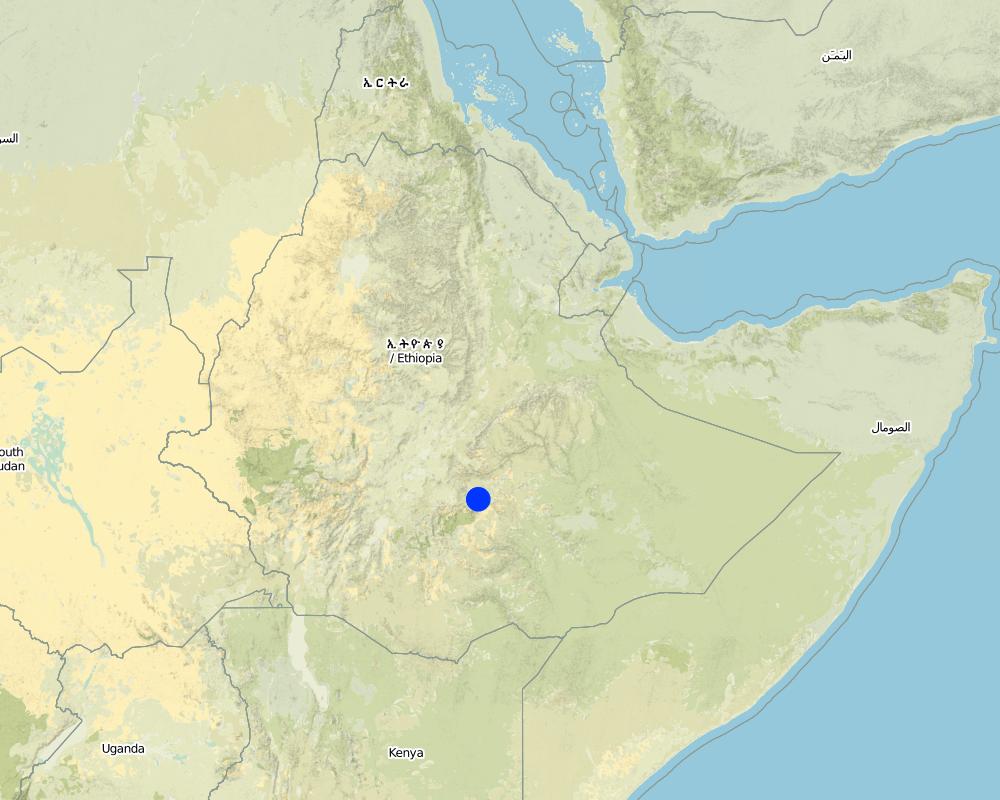Local Level participatory planning approach (LLPPA) [Эфиопия]
- Создание:
- Обновить:
- Составитель: Philippe Zahner
- Редактор: –
- Рецензент: Fabian Ottiger
approaches_2675 - Эфиопия
Просмотреть разделы
Развернуть все Свернуть все1. Общая информация
1.2 Контактные данные специалистов и организаций, участвующих в описании и оценке Подхода
Название организации (-ий), содействовавших документированию/оценке Подхода (если применимо)
Swiss Agency for Development and Cooperation (DEZA / COSUDE / DDC / SDC) - Швейцария1.3 Условия, регламентирующие использование собранных ВОКАТ данных
Составитель и ответственный/-ые специалист(-ы) согласны с условиями, регламентирующими использование собранных ВОКАТ данных:
Да
1.4 Ссылка (-и) на Анкету (-ы) по Технологиям УЗП

Stablized Stone Faced Soil Bund [Эфиопия]
Stablized bund constructed fron stone and soils on the farm land along the contour and planted with multipurposive plant species
- Составитель: Unknown User
2. Описание Подхода УЗП
2.1 Краткое описание Подхода
Participatory planning tools using various PRA techniques to enable the local community to identif their problem prioritize to sellect suitable measures & activities (planing, implementing & mgt of conservation based initiatives.
2.2 Подробное описание Подхода
Подробное описание Подхода:
Aims / objectives: Aims at the sellection of suitable measures & activities in line with the problems needs of the community & individuals relating to soil & water conservation, To develop (enable) the community to involve (participate) fully inplaning, implementing, monitoring managing of conservation based initiatives and decision making, Aims at the selection of suitable measures and activities in line with the problem and needs of the community and individuals, Hence promotion of productivity of the project areas to address the problems, Employ a wide range of methods facilitate community participation in planning discustion on subject area (suitation), i.e. general discustion with community, Group and indvidual discussion community meeting, consulting., Identify targeted areas, initial meeting with community leaders, adminstrators 1st meeting with community. Form (sellect) development team., Problem identification prioritize sellect suitable measures & activities work plan pre paration, planning implementing, monitoring evaluation., Identify the major problems, prioritize identification sellection of proposed development, measures. Work plan preparation, Implementation of sellected activities.
2.5 Страна/ регион/ место, где применялся Подход
Страна:
Эфиопия
Административная единица (Район/Область):
Oromiya
Map
×2.6 Даты начала и окончания реализации Подхода
Год начала реализации:
1992
2.7 Тип Подхода
- в рамках проекта/ программы
2.8 Каковы цели/ задачи Подхода
The Approach focused mainly on SLM with other activities (Micro credit schems, forest development, water development, development of infrastructure.)
The SLM Approach addressed the following problems: Erosion problem (Soil and Water), Food shortage problem, Infrastructure problems, Production problems.
2.9 Условия содействующие применению Технологии/ Технологий в рамках Подхода или затрудняющие его
Социальные/ культурные/ религиозные нормы и ценности
- затрудняют
Need external inputs, Lack of responsibility to keep & maintain
Treatment through the SLM Approach: Provide training, encourage the participation of community in all activities.
Наличие/ доступность финансовых ресурсов и услуг
- затрудняют
Poverity; less production yield, shortage of farmland, increasing of family size
Treatment through the SLM Approach: Apply income generating projects, intensfy family planning programme, improve local farming system, effective management.
Институциональные условия
- затрудняют
Less finanical capacity & skilled man power, lack of well & highly organized institue
Treatment through the SLM Approach: Encourage the involvement of different NGO's strengthen their capacity.
Осведомленность в области УЗП, доступность технической поддержки
- затрудняют
Lack of skilled manpower, ignoring of indigenous k/dge; less technical awareness of farmers.
Treatment through the SLM Approach: Capacity building, community training, encourage (modify) indigenous k/dge.
3. Участие и распределение ролей заинтересованных сторон
3.1 Заинтересованные стороны, участвующие в реализации Подхода и их роли
- местные землепользователи/ местные сообщества
Specific ethnic groups: Locally existing groups
Because of the local cultural norms cultural barriers. Mainly men be a team leader, and excutives. Group 1 & group 2 By ranking their wealth & using vulnearability ranking & the sellected criteria of land size & live stock holding.
- государственные власти (отвечающие за планирование или принятие решений)
Regional state, W/resource dev. Authority MOA.
- международные организации
3.2 Участие местных землепользователей/ местных сообществ на разных стадиях реализации Подхода
| Участие местных землепользователей/ местных сообществ | Перечислите участников и опишите их вовлеченность | |
|---|---|---|
| инициирование/ мотивация | пассивное | consuling; Participate by consulting involved by answering question area. |
| планирование | интерактивное | Mainly: rapid/participatory rural appraisal, public meetings; partly: workshops/seminars, interviews/questionnaires; Planning prepared by Devt. Team descussed with communities. |
| выполнение | внешняя поддержка | casual labour, responsibility for minor steps; Participatte by his labour & contribute equipment (materials) |
| мониторинг/ оценка | пассивное | Mainly: interviews/questionnaires, public meetings; partly: measurements/observations; Involved by answering questions |
| Research | нет |
3.4 Принятие решений по выбору Технологии/ Технологий УЗП
Укажите, кто принимал решение по выбору применяемой Технологии/ Технологий:
- в основном землепользователи при поддержке специалистов по УЗП
Поясните:
Land users sellect the suitable measures of activities facilitated by SWC specialists.
Decisions on the method of implementing the SLM Technology were made by mainly by SLM specialists with consultation of land users
5. Финансирование и внешняя материальная поддержка
5.1 Годовой бюджет мероприятий по УЗП в рамках Подхода
Комментарий (например, основные источники финансирования/ ключевые доноры):
Approach costs were met by the following donors: international non-government (-): 100.0%
7. Справочные материалы и ссылки
7.1 Методы сбора/источники информации
- выезды на места, полевые обследования
- опросы землепользователей
Ссылки и модули
Развернуть все Свернуть всеСсылки

Stablized Stone Faced Soil Bund [Эфиопия]
Stablized bund constructed fron stone and soils on the farm land along the contour and planted with multipurposive plant species
- Составитель: Unknown User
Модули
Нет модулей


